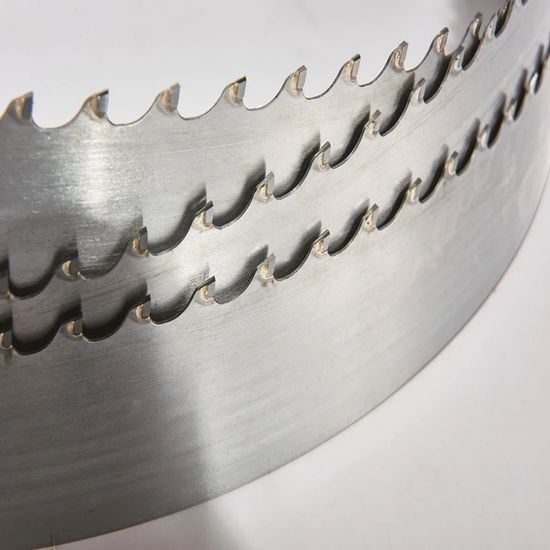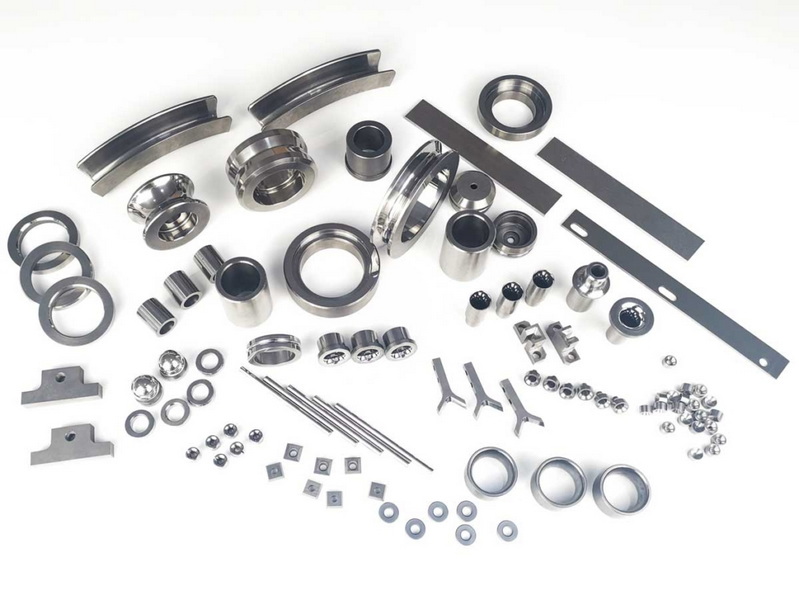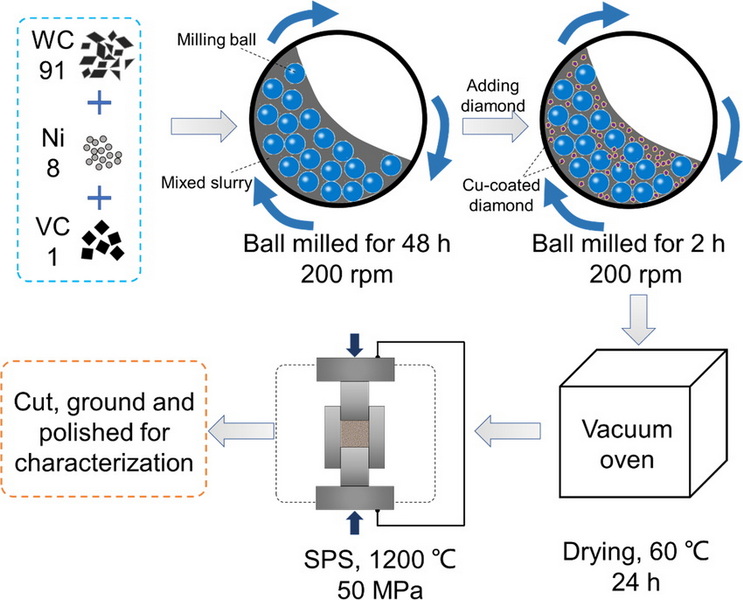Content Menu
● Introduction to Tungsten Carbide
>> Chemical Structure
● Properties of Tungsten Carbide
>> Physical Properties
>> Chemical Properties
● Applications of Tungsten Carbide
>> Industrial Applications
>> Non-Industrial Applications
● Is Tungsten Carbide Ionic?
>> Bonding Nature
● Production and Processing
● Environmental and Health Considerations
>> Environmental Impact
>> Health Risks
● Conclusion
● FAQ
>> 1. What is the chemical formula of tungsten carbide?
>> 2. How is tungsten carbide synthesized?
>> 3. What are the primary applications of tungsten carbide?
>> 4. Is tungsten carbide resistant to corrosion?
>> 5. What type of bonding does tungsten carbide exhibit?
● Citations:
Tungsten carbide, with the chemical formula WC, is a compound consisting of tungsten and carbon atoms. It is renowned for its exceptional hardness and durability, making it a crucial material in various industrial applications, including cutting tools and wear-resistant parts. However, the question of whether tungsten carbide is an ionic compound requires an understanding of its chemical structure and bonding nature.

Introduction to Tungsten Carbide
Tungsten carbide is synthesized by reacting tungsten with carbon at high temperatures, typically between 1,400°C and 2,000°C. The resulting compound has a hexagonal crystal structure, where tungsten atoms form a lattice and carbon atoms fill the interstices. This structure is characteristic of interstitial carbides, which are formed by transition metals like tungsten.
Chemical Structure
The chemical structure of tungsten carbide is not typical of ionic compounds, which usually involve the transfer of electrons between atoms to form ions. Instead, tungsten carbide exhibits covalent or interstitial bonding, where carbon atoms occupy the interstices of a tungsten lattice. This type of bonding is common in transition metal carbides and contributes to their hardness and stability.
Tungsten carbide's crystal structure is often described as a hexagonal close-packed (hcp) arrangement of tungsten atoms with carbon atoms in the octahedral interstices. This arrangement maximizes the packing efficiency and contributes to the compound's high density and hardness.
Properties of Tungsten Carbide
Tungsten carbide is known for its high melting point, hardness, and resistance to corrosion. These properties make it ideal for applications in cutting tools, wear-resistant parts, and even jewelry.
Physical Properties
- Melting Point: Tungsten carbide has a melting point of approximately 2,870°C, which is among the highest for any material.
- Hardness: It ranks about 9 on the Mohs scale, making it one of the hardest substances known, second only to diamond.
- Thermal Conductivity: It exhibits a high thermal conductivity, which is beneficial for dissipating heat in high-temperature applications.
Chemical Properties
- Corrosion Resistance: Tungsten carbide is resistant to most acids but can react with hydrofluoric acid and fluorine gas.
- Oxidation: It begins to oxidize at temperatures around 500°C to 600°C.
Applications of Tungsten Carbide
Given its exceptional properties, tungsten carbide is widely used in various industries:
Industrial Applications
- Cutting Tools: Tungsten carbide is used in drill bits, saw blades, and other cutting tools due to its hardness and wear resistance.
- Wear-Resistant Parts: It is used in parts that require high durability, such as in mining and construction equipment.
Non-Industrial Applications
- Jewelry: Tungsten carbide is also used in jewelry due to its hardness and resistance to scratches.
- Medical Tools: Its durability makes it suitable for certain medical instruments.
In addition to these applications, tungsten carbide is used in rocket nozzles and other high-temperature components due to its ability to withstand extreme temperatures without degrading.

Is Tungsten Carbide Ionic?
To determine if tungsten carbide is an ionic compound, we need to understand the nature of its chemical bonds. Ionic compounds are formed when there is a significant difference in electronegativity between the atoms involved, leading to the transfer of electrons and the formation of ions. In contrast, tungsten carbide forms through interstitial bonding, where carbon atoms fit into the interstices of a tungsten lattice without significant electron transfer.
Bonding Nature
The bonding in tungsten carbide is more akin to covalent or interstitial bonding rather than ionic. This is typical for transition metal carbides, where the carbon atoms occupy specific positions within the metal lattice, contributing to the compound's hardness and stability.
Production and Processing
The production of tungsten carbide typically involves the reaction of tungsten metal with carbon in the form of graphite or carbon black. This process is often carried out in a high-temperature furnace. The resulting carbide powder can then be consolidated using various techniques, such as sintering or hot isostatic pressing (HIP), to form the desired shape and structure.
Cemented carbide, a common form of tungsten carbide, is produced by mixing tungsten carbide powder with a binder metal, typically cobalt, and then sintering the mixture. The cobalt acts as a binder, holding the tungsten carbide grains together and providing toughness to the material.
Environmental and Health Considerations
While tungsten carbide is generally considered safe when used properly, there are environmental and health considerations associated with its production and disposal. The mining of tungsten can have environmental impacts, and exposure to tungsten carbide dust during processing can pose health risks.
Environmental Impact
The extraction of tungsten often involves open-pit mining, which can lead to soil erosion and water pollution if not managed properly. Additionally, the high energy required for the production of tungsten carbide contributes to greenhouse gas emissions.
Health Risks
Inhalation of tungsten carbide dust can cause respiratory problems. Therefore, it is crucial to implement proper safety measures during handling and processing.
Conclusion
Tungsten carbide is not an ionic compound but rather exhibits interstitial or covalent bonding. Its unique properties make it invaluable in various industrial and non-industrial applications. Understanding its chemical structure and bonding nature is crucial for appreciating its uses and limitations.

FAQ
1. What is the chemical formula of tungsten carbide?
Tungsten carbide has the chemical formula WC, consisting of equal parts of tungsten and carbon atoms.
2. How is tungsten carbide synthesized?
Tungsten carbide is synthesized by heating tungsten with carbon at high temperatures, typically between 1,400°C and 2,000°C.
3. What are the primary applications of tungsten carbide?
Tungsten carbide is primarily used in cutting tools, wear-resistant parts, and jewelry due to its hardness and durability.
4. Is tungsten carbide resistant to corrosion?
Yes, tungsten carbide is resistant to most acids but can react with hydrofluoric acid and fluorine gas.
5. What type of bonding does tungsten carbide exhibit?
Tungsten carbide exhibits interstitial or covalent bonding rather than ionic bonding.
Citations:
[1] https://en.wikipedia.org/wiki/Tungsten_carbide
[2] https://hpvchemicals.oecd.org/ui/handler.axd?id=ed1c76bf-dad9-4baa-8d1b-70fed7f92862
[3] https://www.allied-material.co.jp/en/techinfo/tungsten_carbide/features.html
[4] http://www.tungsten-carbide.com.cn
[5] https://www.linde-amt.com/resource-library/articles/tungsten-carbide
[6] https://www.carbideprobes.com/wp-content/uploads/2019/07/TungstenCarbideDataSheet.pdf
[7] https://www.alamy.com/stock-photo/tungsten-carbide.html
[8] https://www.britannica.com/science/tungsten-carbide
[9] https://www.vedantu.com/chemistry/carbide
[10] https://en.wikipedia.org/wiki/Carbide
















